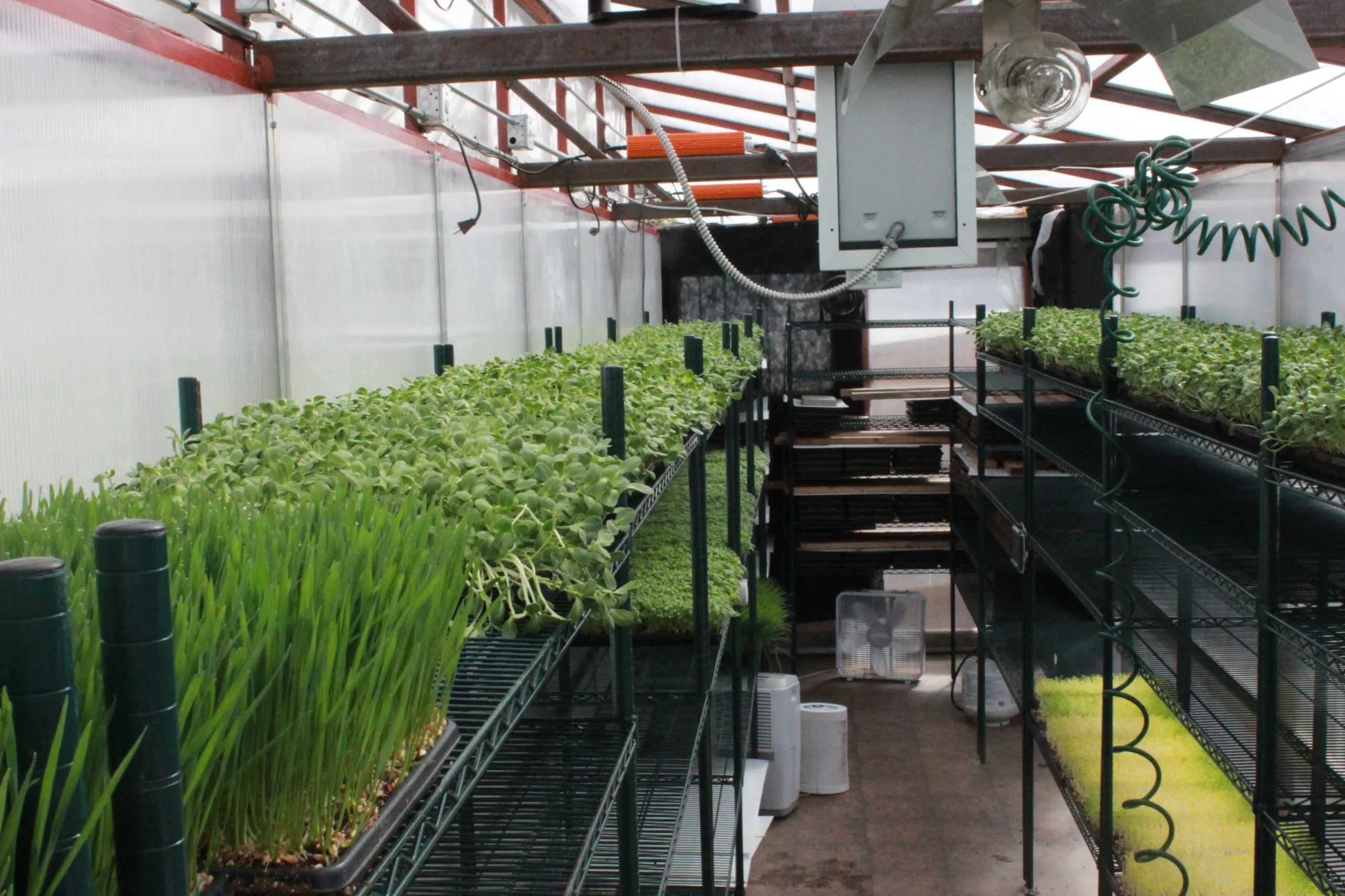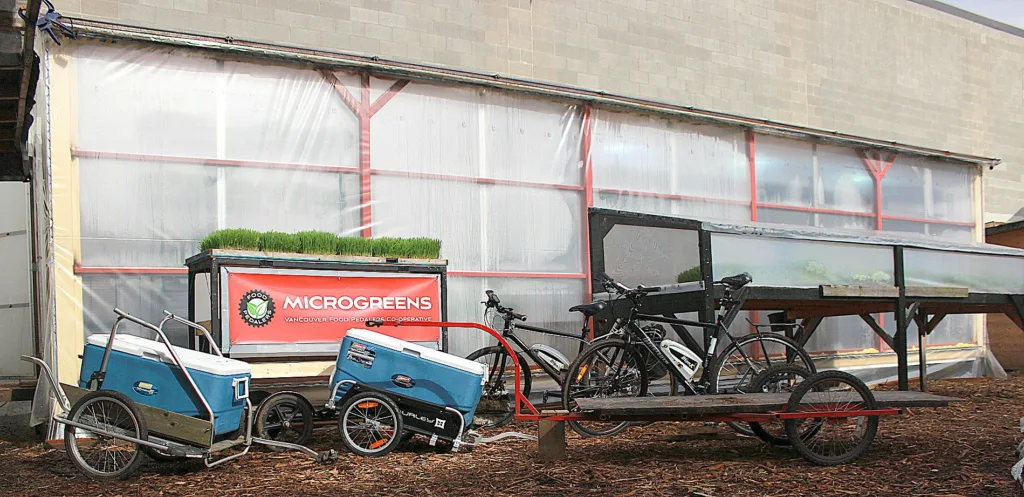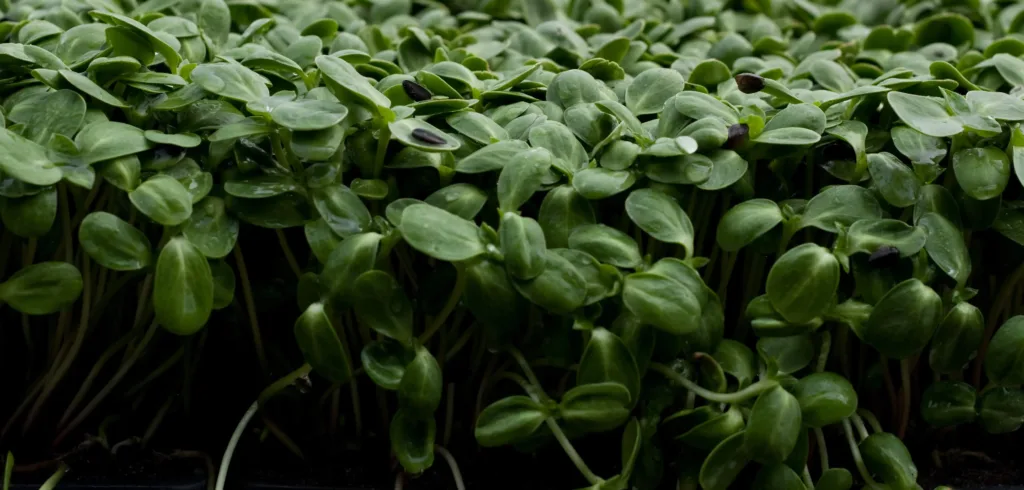
Greenhouse Microgreens Production: Harnessing the Power of Sunlight
Introduction
Greenhouses occupy a unique and powerful middle ground between low-cost outdoor setups and high-investment warehouse systems. They combine the environmental control of indoor production with the natural benefits of sunlight, offering a high-performance space that can scale up or down depending on your needs and climate.
Maximizing Light
At their core, greenhouses are about maximizing natural light. Sunlight is free, full-spectrum, and effective at growing dense, healthy microgreens. While the intensity and duration of light can vary depending on your location and season, the supplemental energy that sunlight provides can significantly reduce your electricity usage. This is especially important in the off-season when indoor lighting costs can skyrocket.
Metal halide or LED grow lights can be added to offset cloudy days and shorter winter photoperiods. These lights not only support growth but also provide ambient heat. In colder months, the sun and lights together act as a dual-purpose system: photosynthesis and temperature regulation.

In a well-designed greenhouse, you can achieve consistent year-round production, especially when paired with heaters, fans, and supplemental lighting.
Choosing a Design
Greenhouses come in many forms — from high-end, purpose-built structures with insulated panels and automated venting, to more modest setups like retrofitted shipping containers or modular tunnel houses. Regardless of the form, the key is achieving sufficient climate control. Good greenhouses manage airflow, humidity, and temperature through exhaust fans, passive venting, thermostats, and shade cloth. Without these tools, a sunny spring day can quickly push temperatures past 40°C (104°F), putting crops at risk.
A well-built greenhouse can support a modular, scalable workflow. Many growers install epoxy-coated steel shelving inside the greenhouse, often in three vertical layers: one at knee height, one at waist or chest level, and one overhead. Intermediate racks may also be added temporarily during transitions between harvests. One section of the greenhouse can be devoted to germination — outfitted with insulation and heat mats — while the rest of the structure is focused on active photosynthesis.
Greenhouse Layout
The layout matters. A smart greenhouse layout separates crop stages, facilitates good air movement, and prevents overcrowding — all of which reduce the risk of mold and improve crop uniformity. Floor heating, heated benches, or thermal mass systems like concrete slabs with hot water circulation can provide even root-zone temperatures during colder months. This is especially valuable because a warm root zone allows the crop to thrive even if the ambient air temperature is lower.
Pest prevention and sanitation are still important considerations in greenhouses. While the space is enclosed, it is not sealed like an indoor environment. Rodents, insects, and fungal spores can still find their way in — especially if the greenhouse is not cleaned and maintained properly. Mesh screens, door seals, regular cleaning routines, and pest monitoring all contribute to maintaining a hygienic growing environment.
In Closing
One of the key benefits of greenhouse growing is its adaptability. A grower might start with a simple hoop house and expand into a more sophisticated greenhouse as production increases. Alternatively, a covered bench system can be placed inside a greenhouse, creating a microclimate within a microclimate. This dual-layered approach can extend your production season and reduce your heating needs by buffering external weather fluctuations.
While greenhouses require an upfront investment, they offer a strong return in productivity, energy savings, and product quality — particularly in regions with decent sunlight during the winter months. They’re an excellent choice for growers who want to operate at a moderate to large scale without relying entirely on artificial inputs. In the next section, we’ll look more closely at hoop houses, a simpler, more affordable cousin of the greenhouse that still offers many of the same benefits.

Leave a Reply